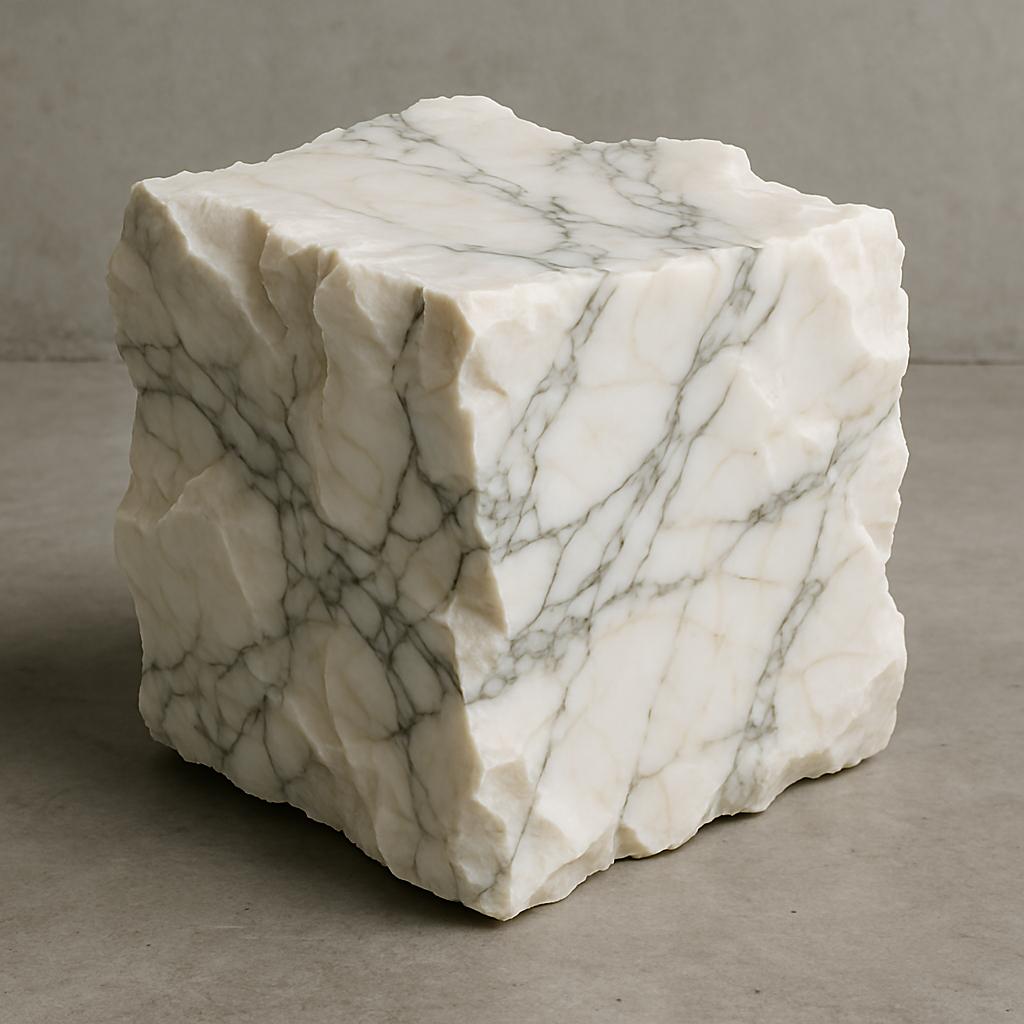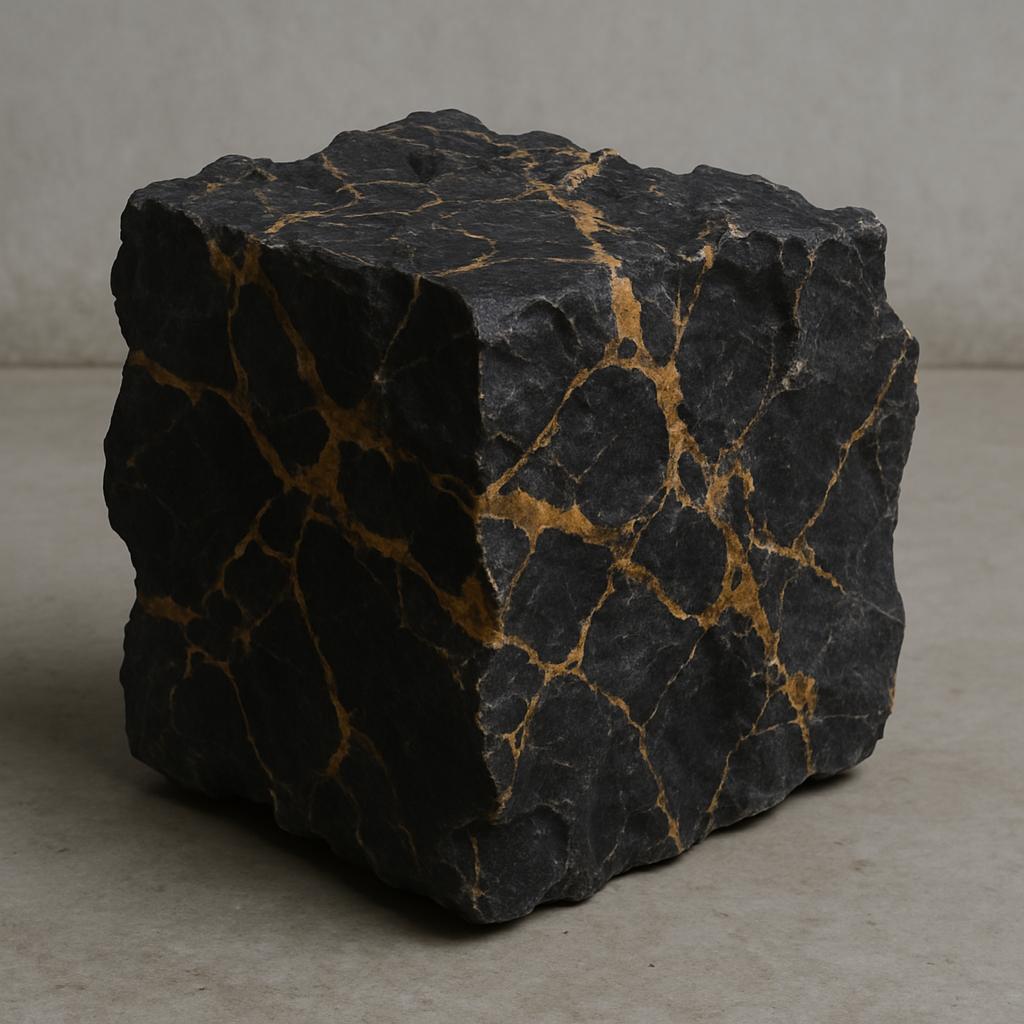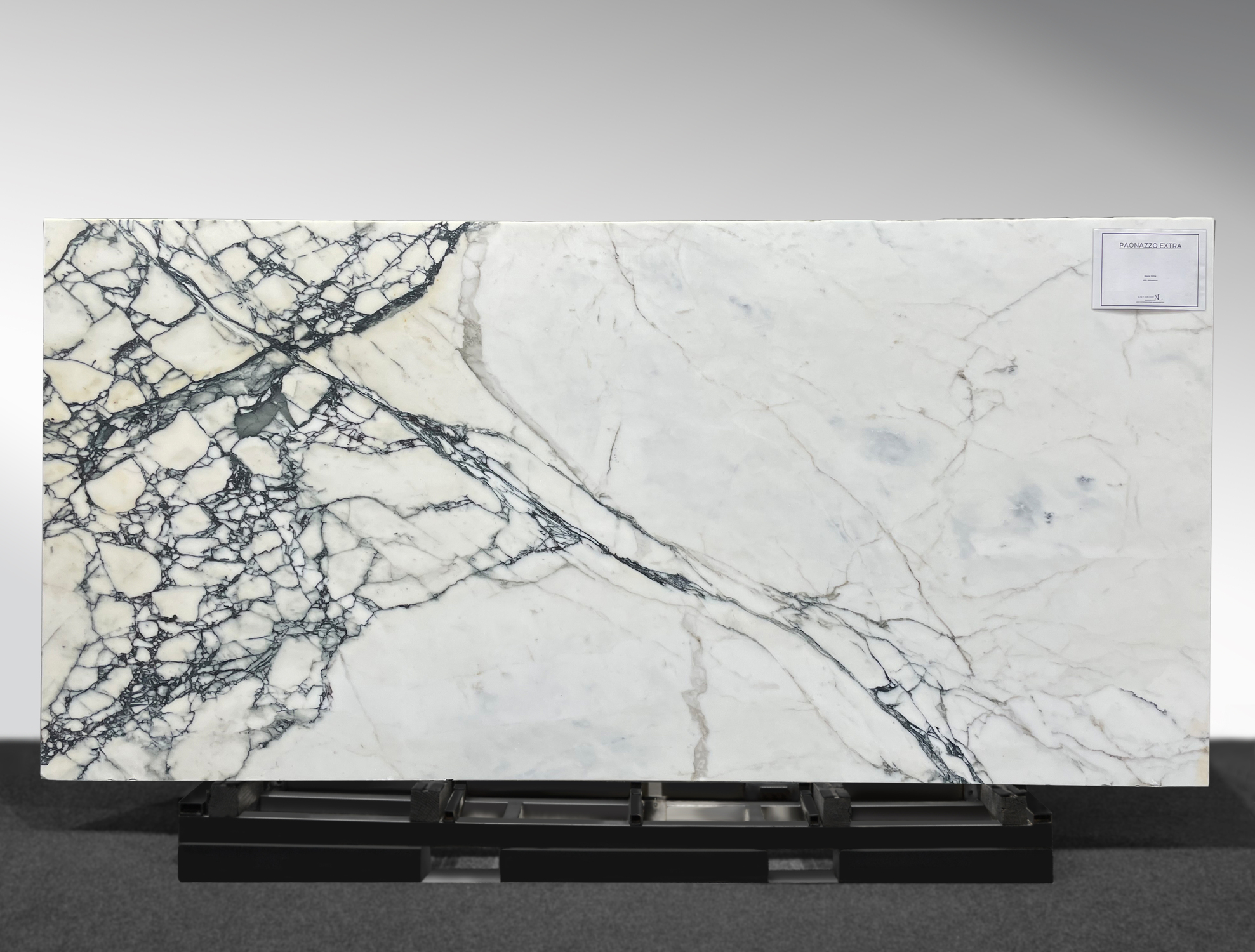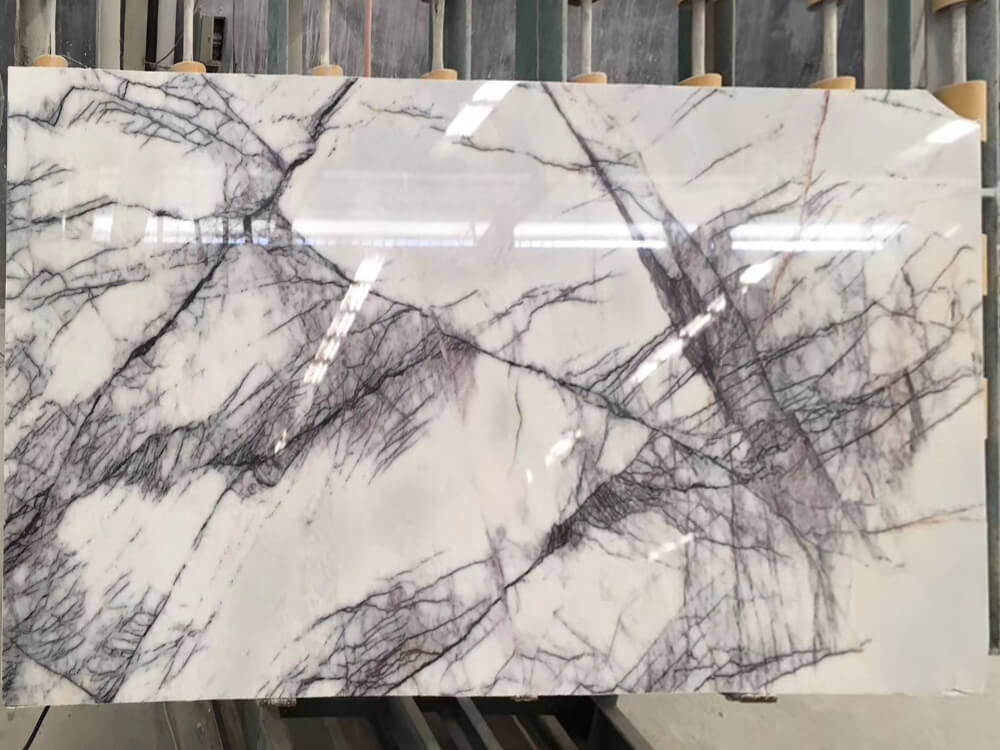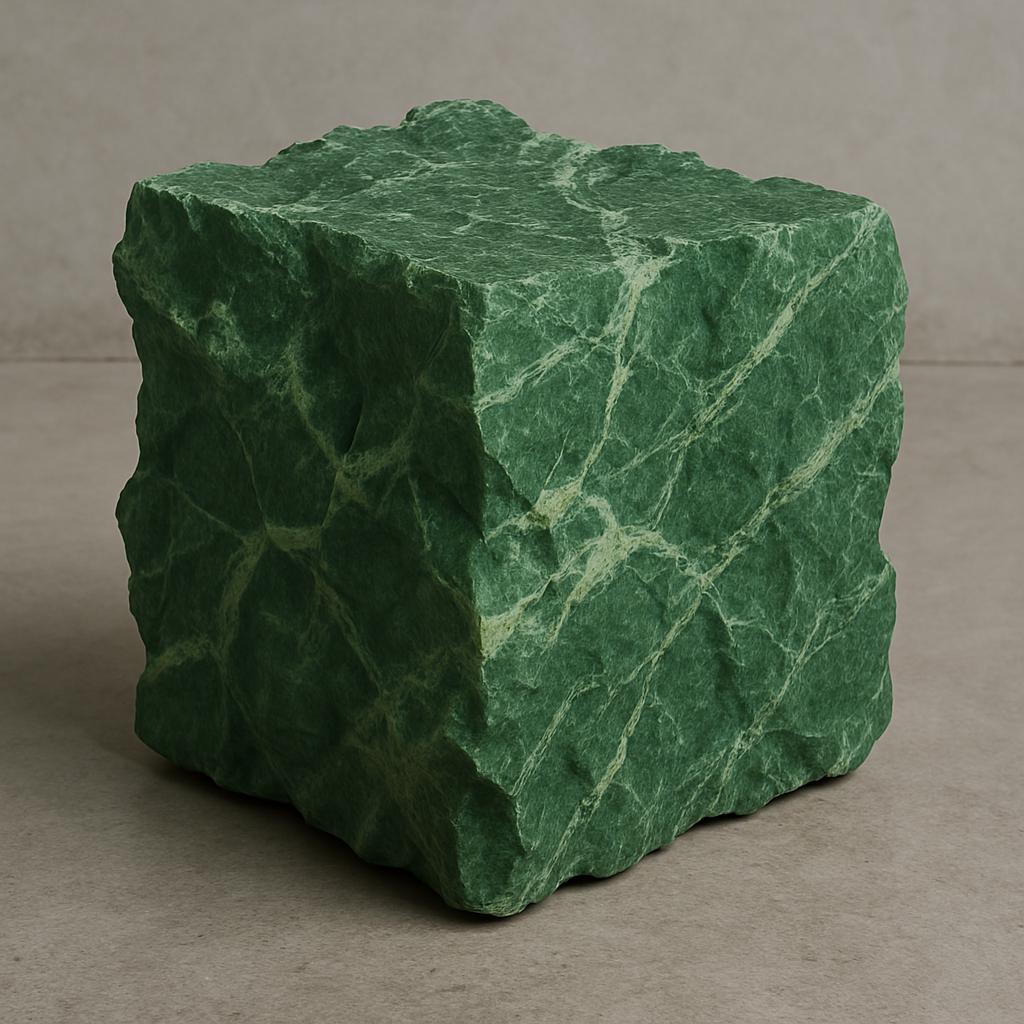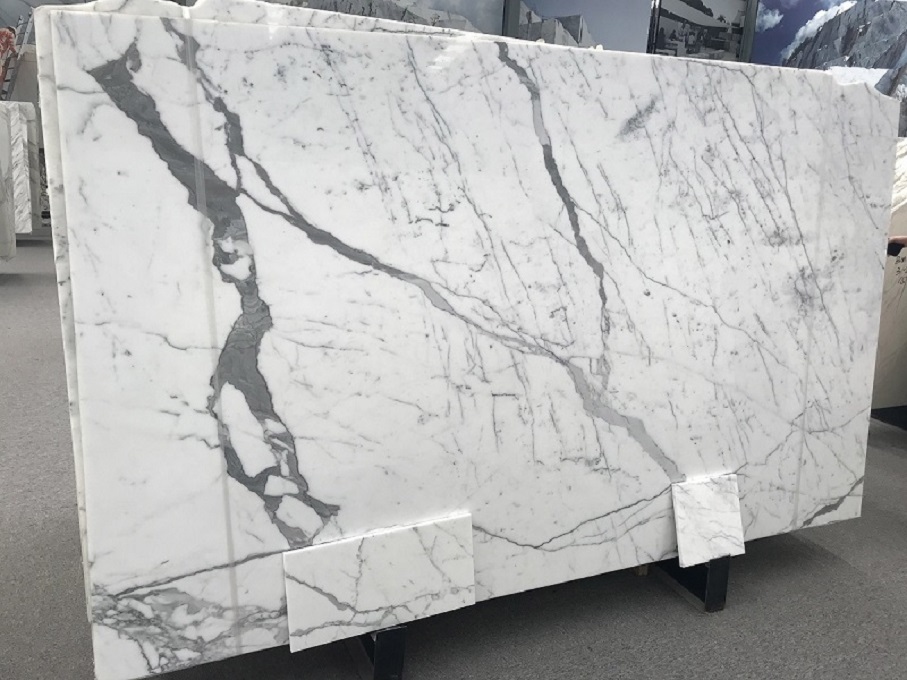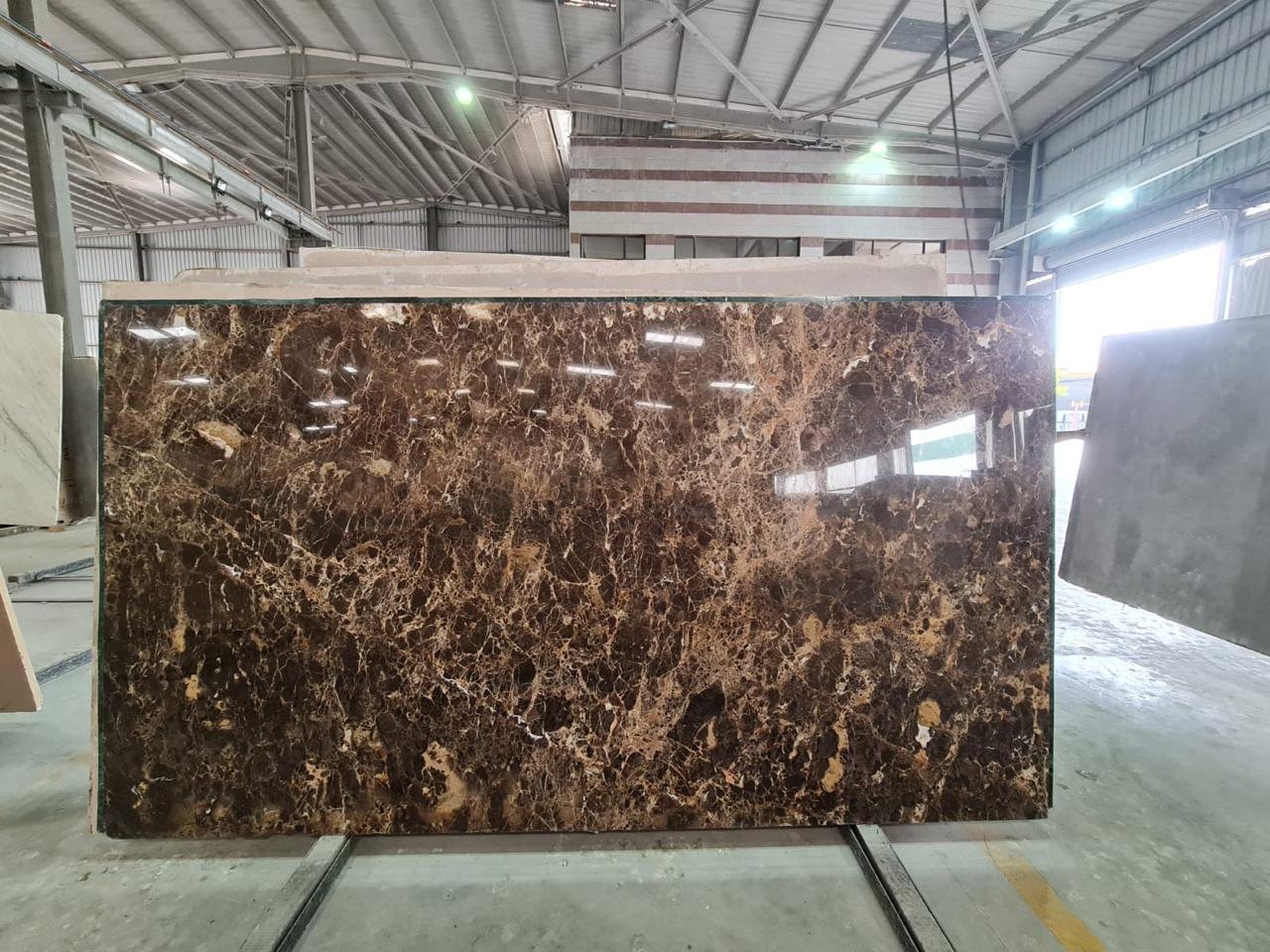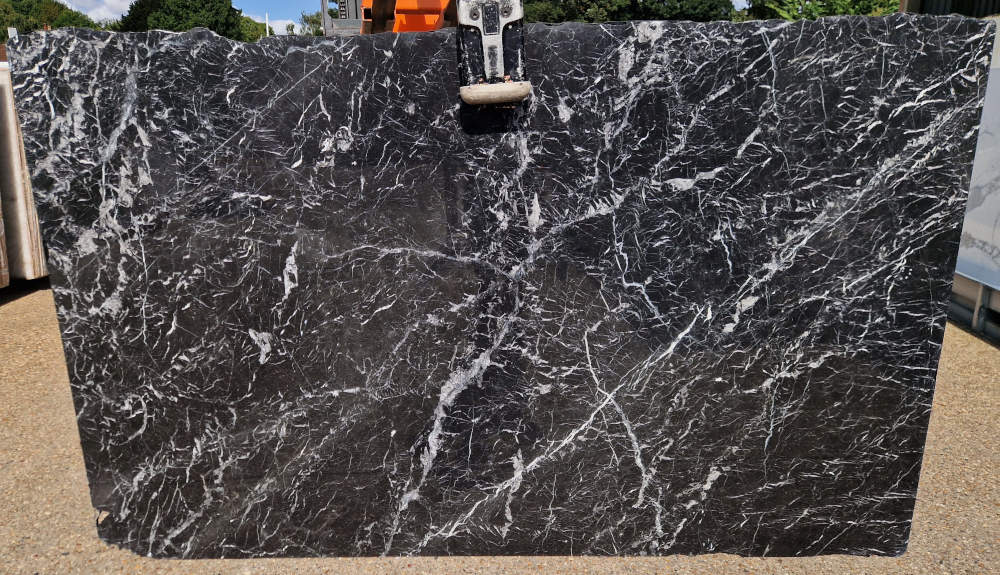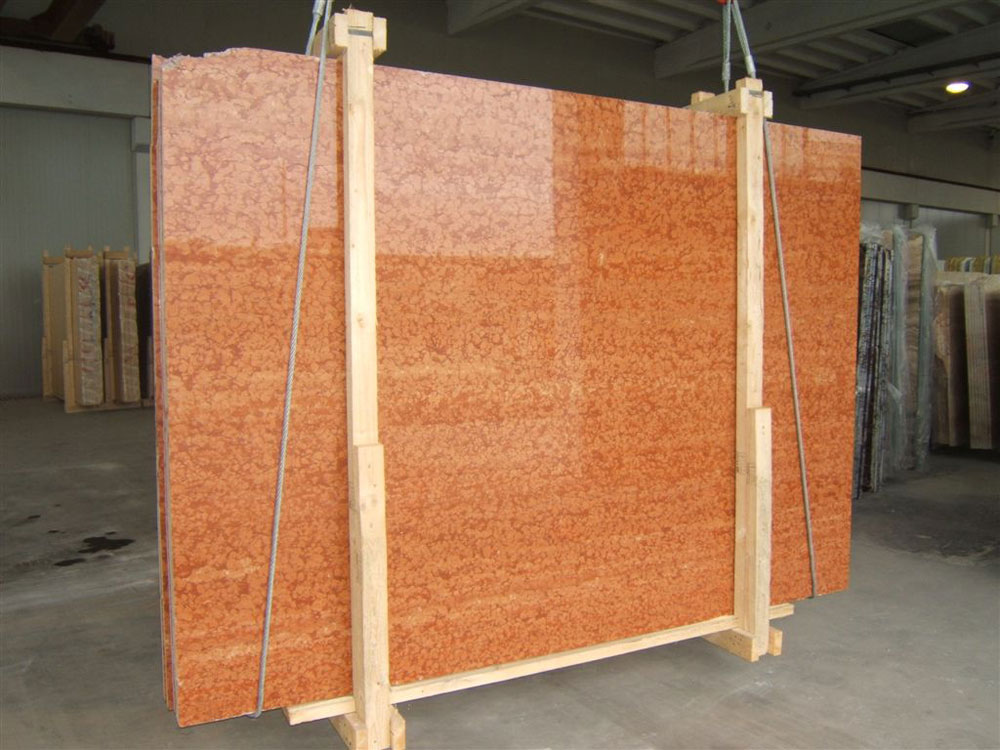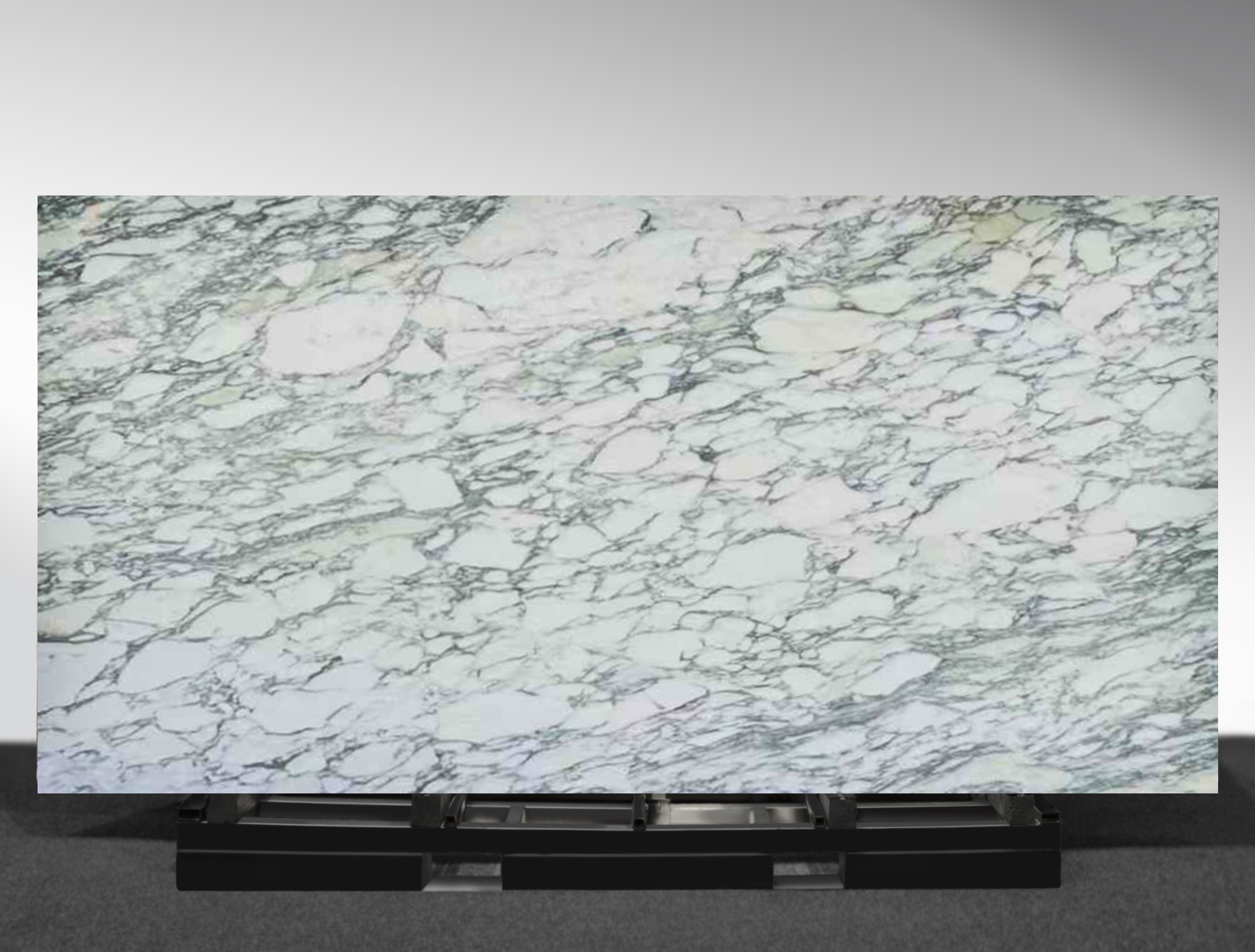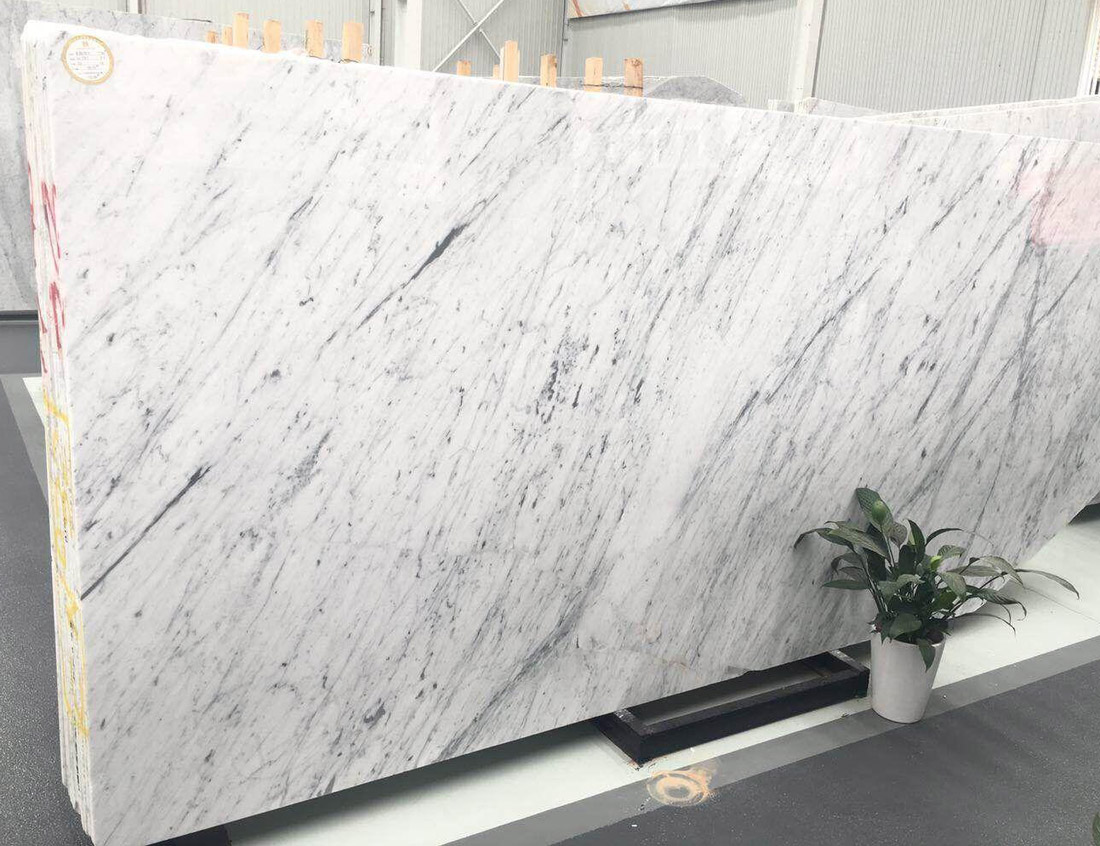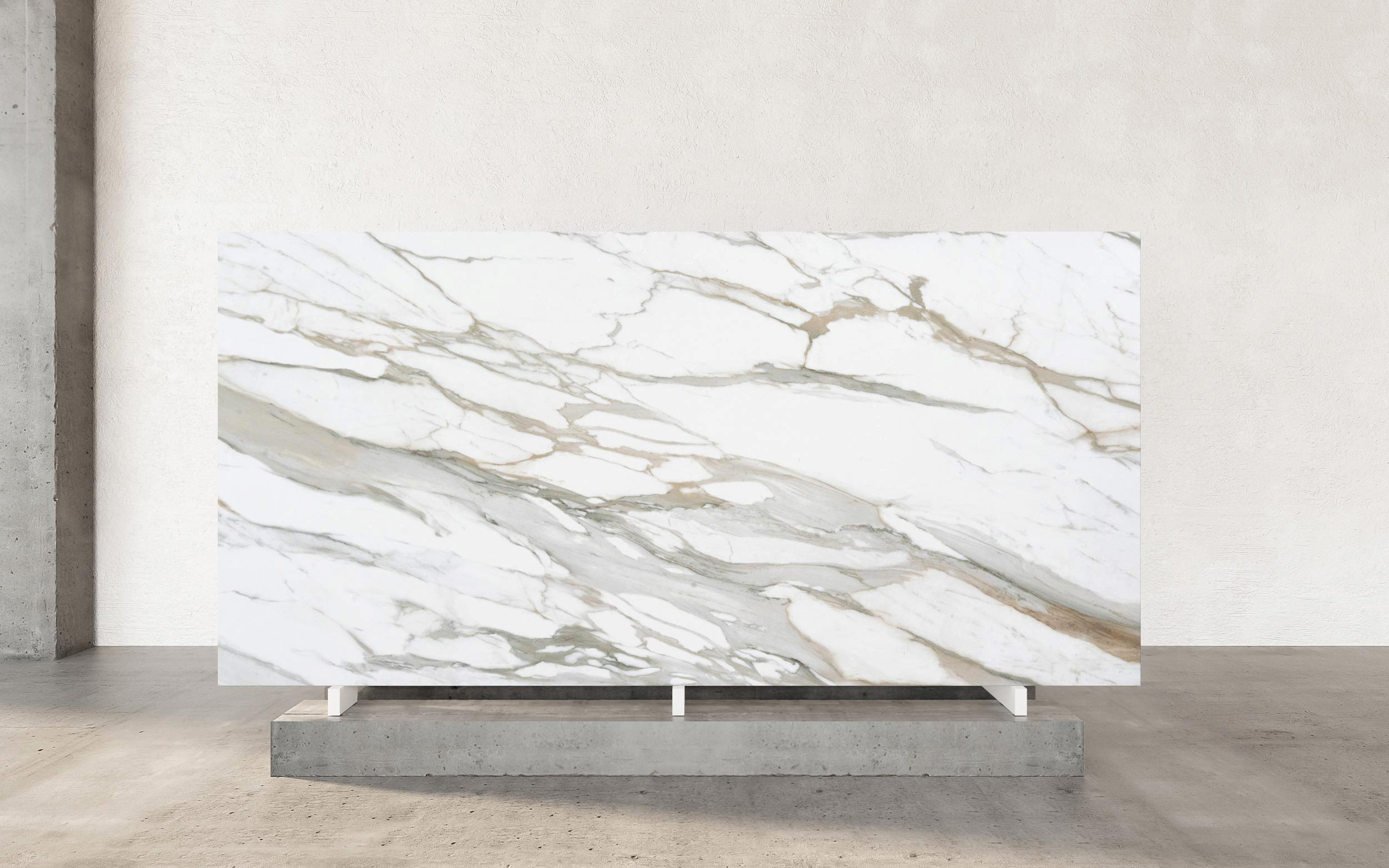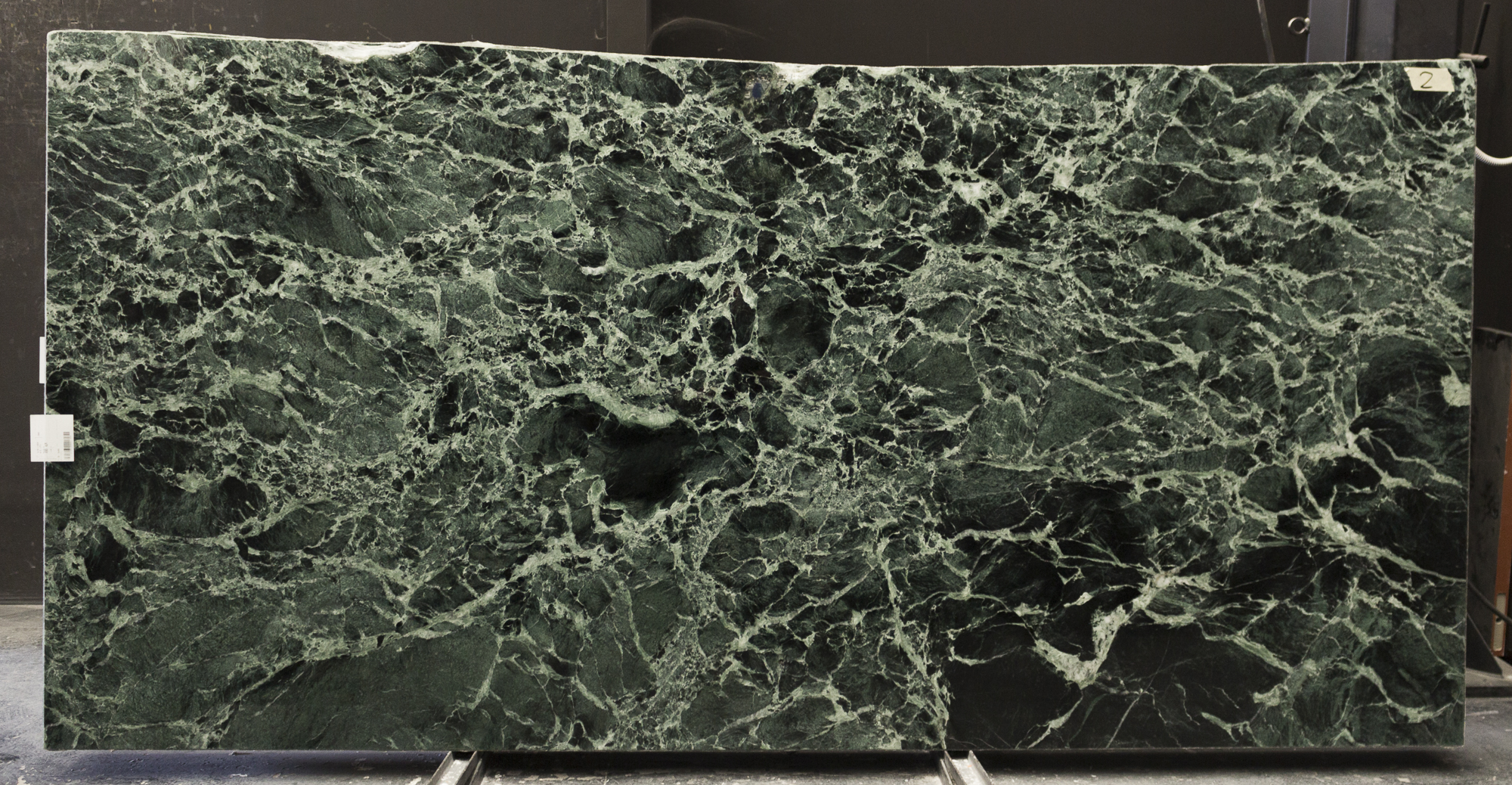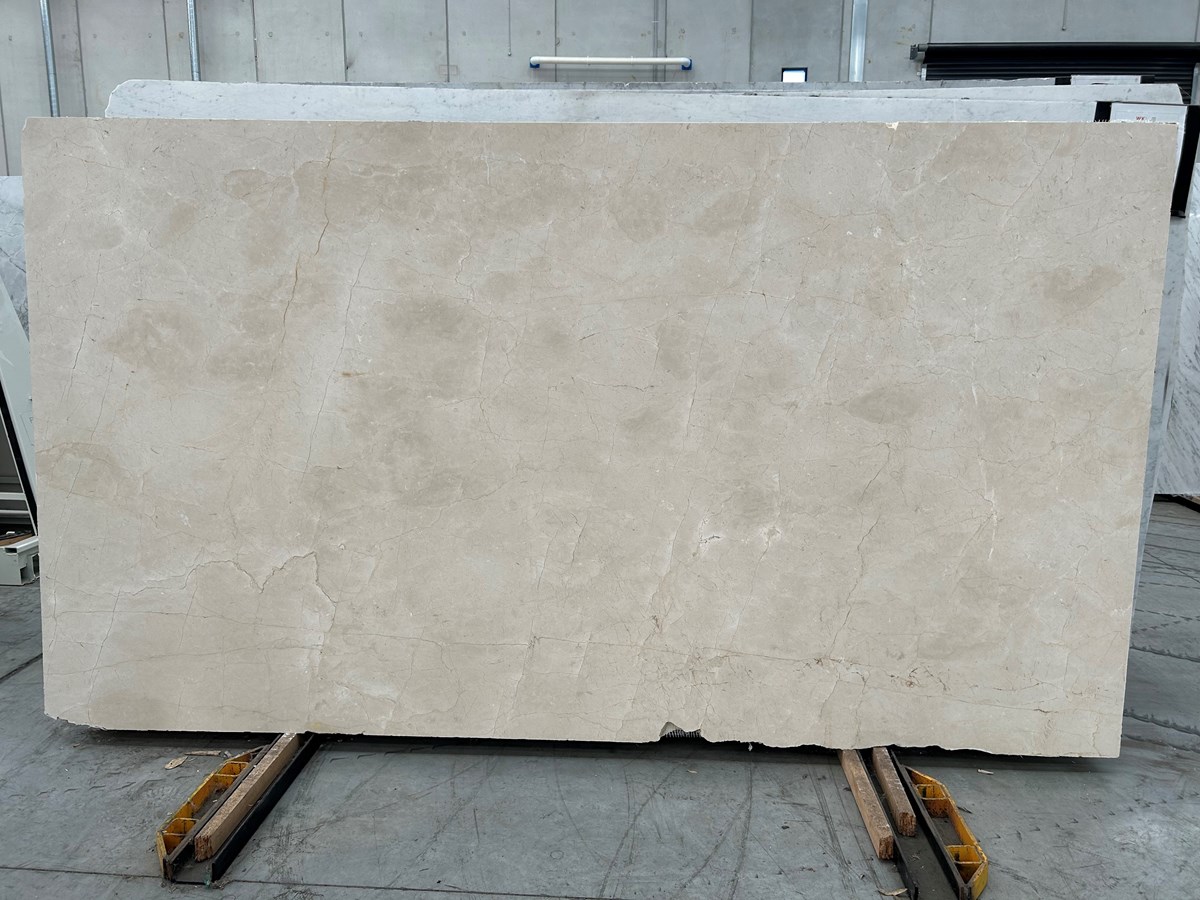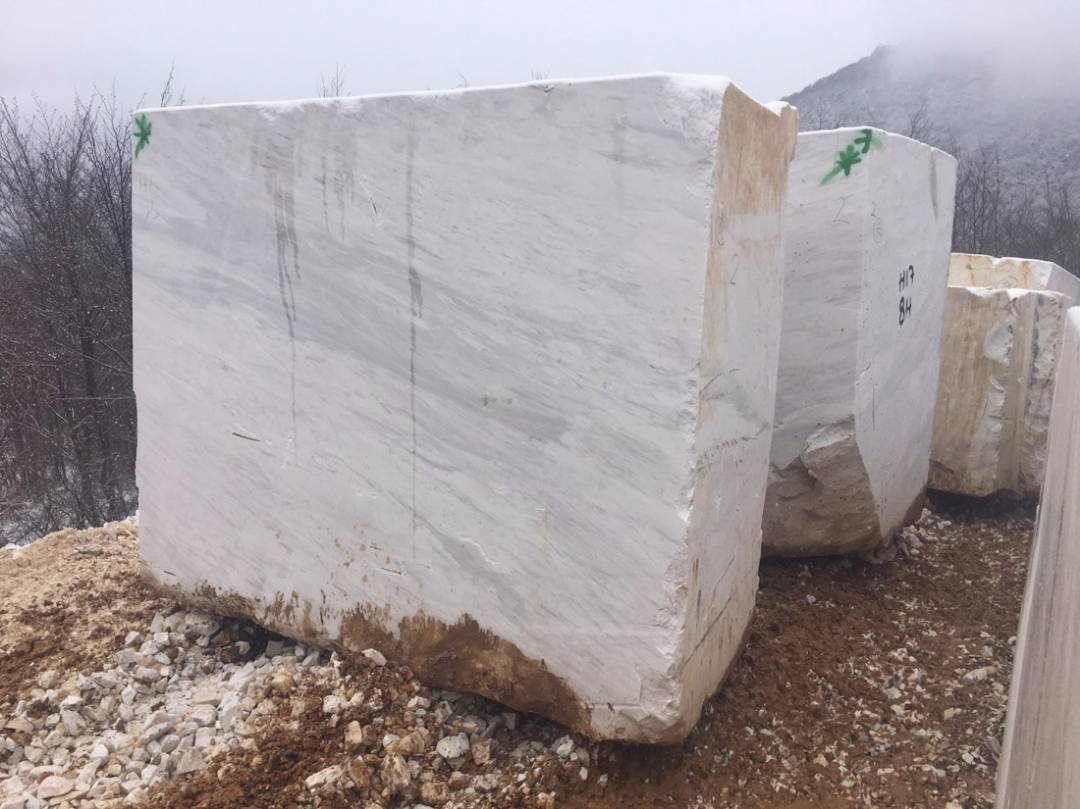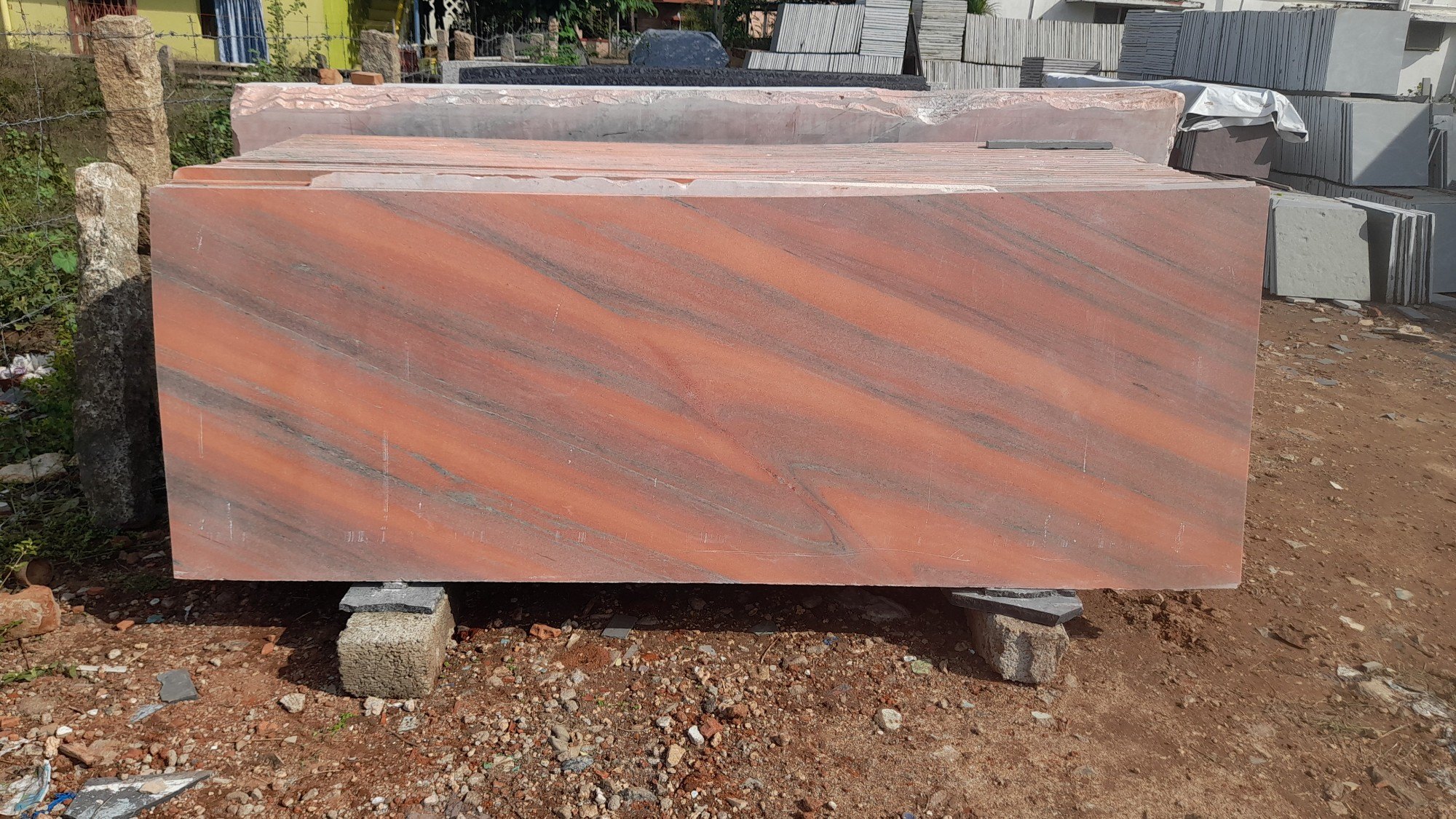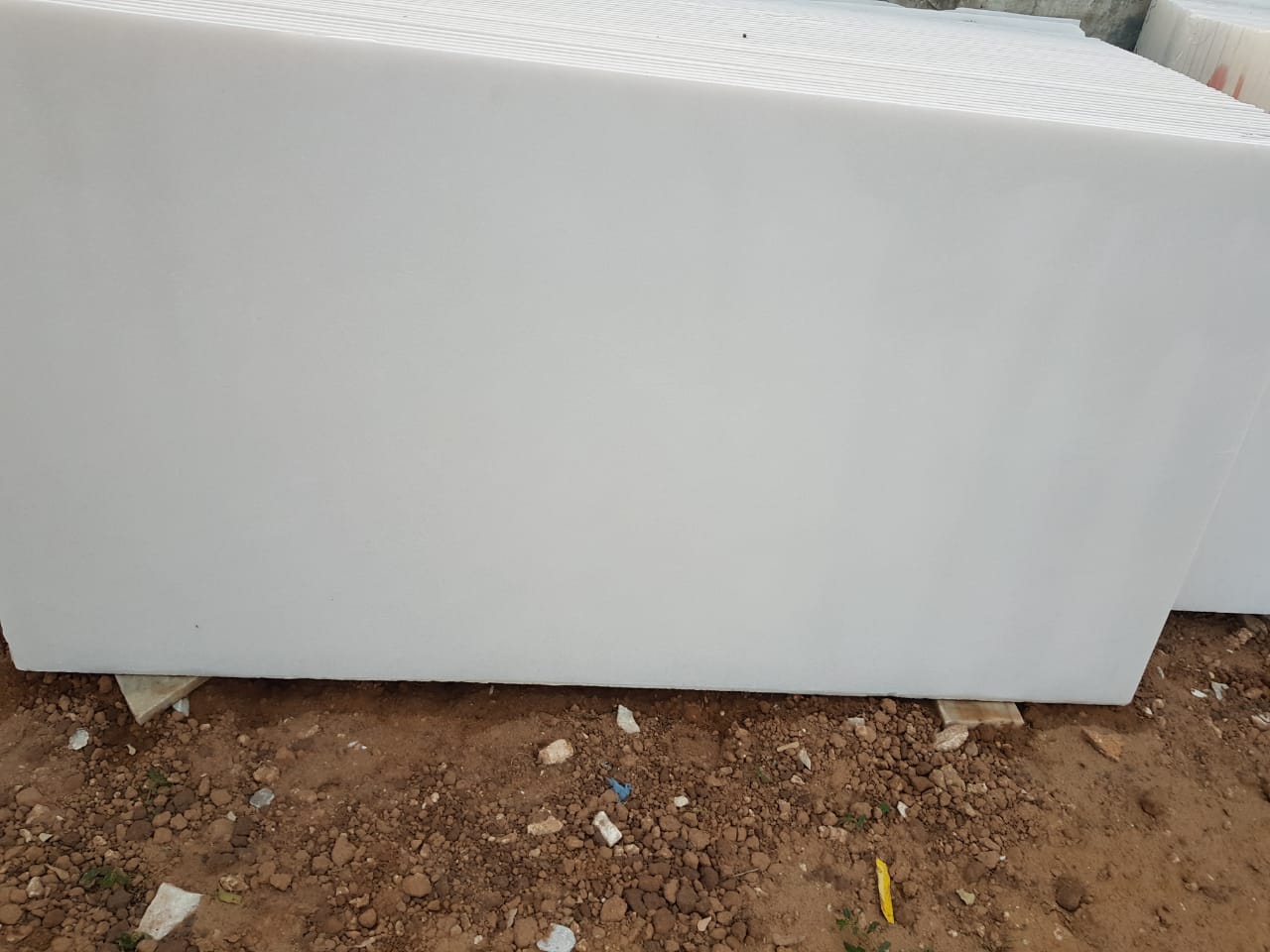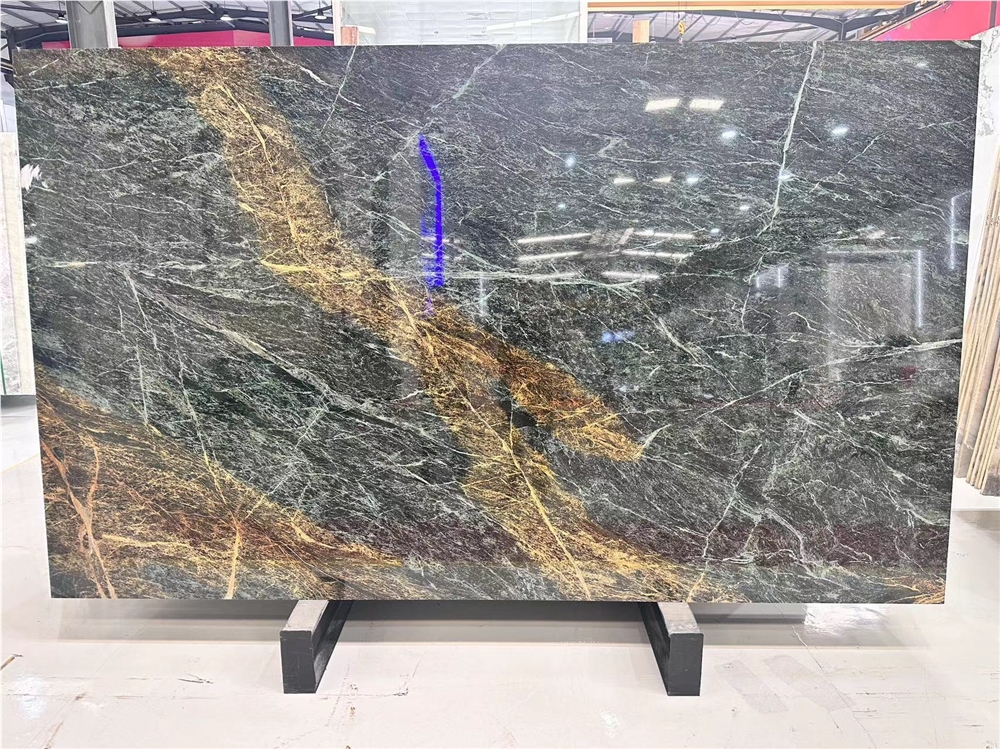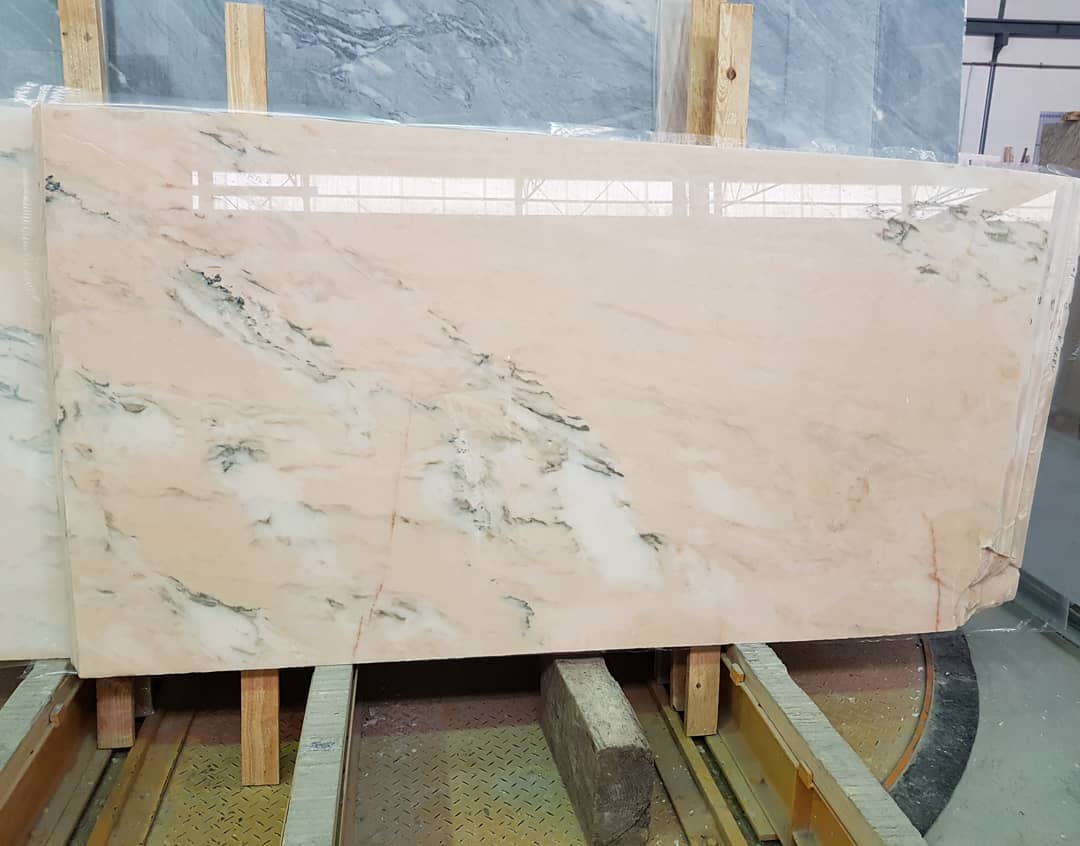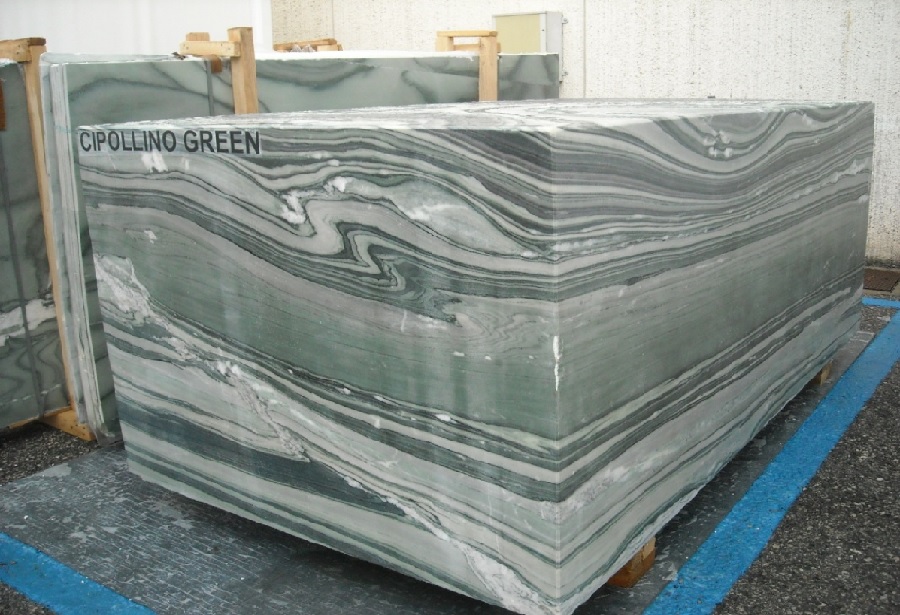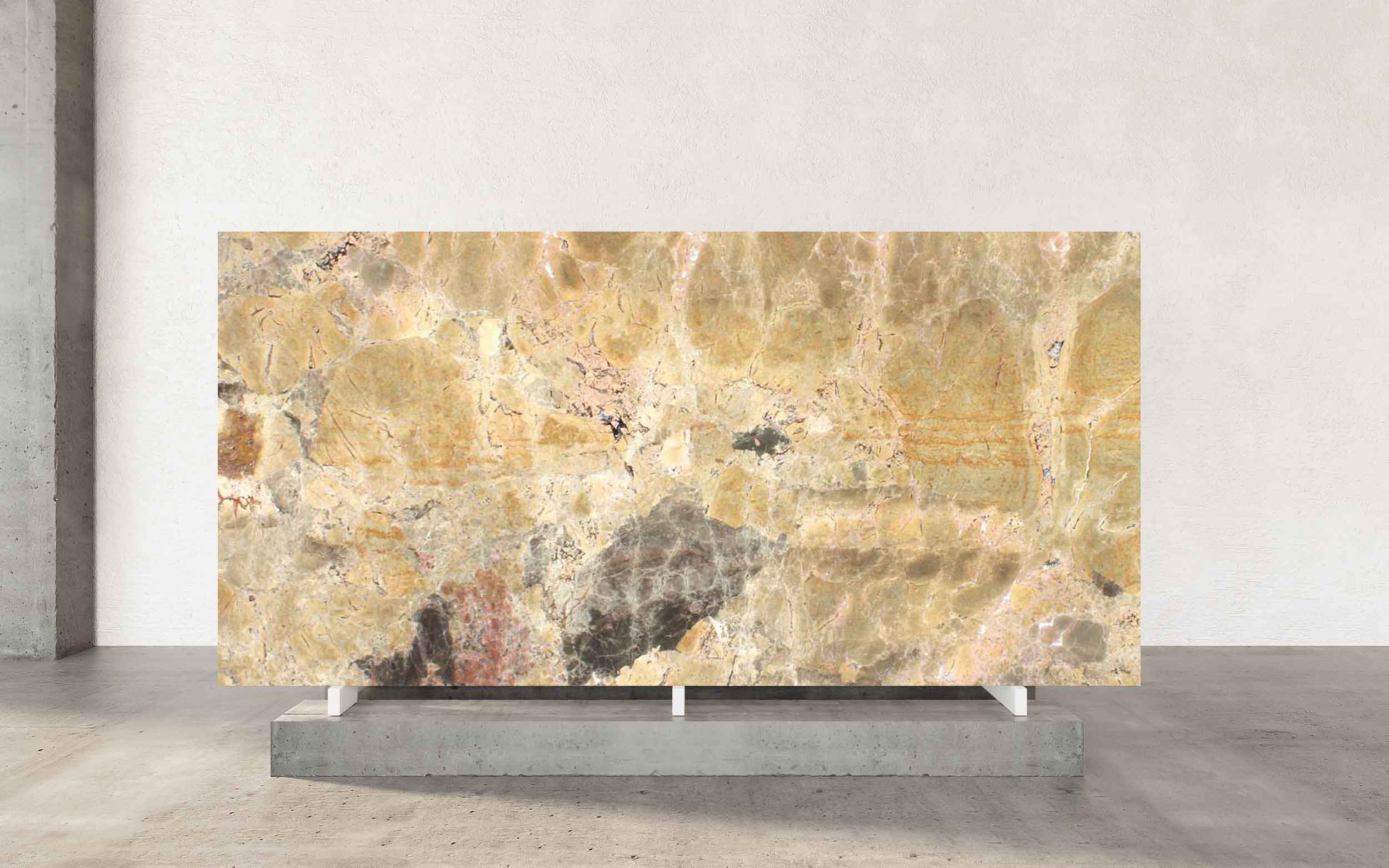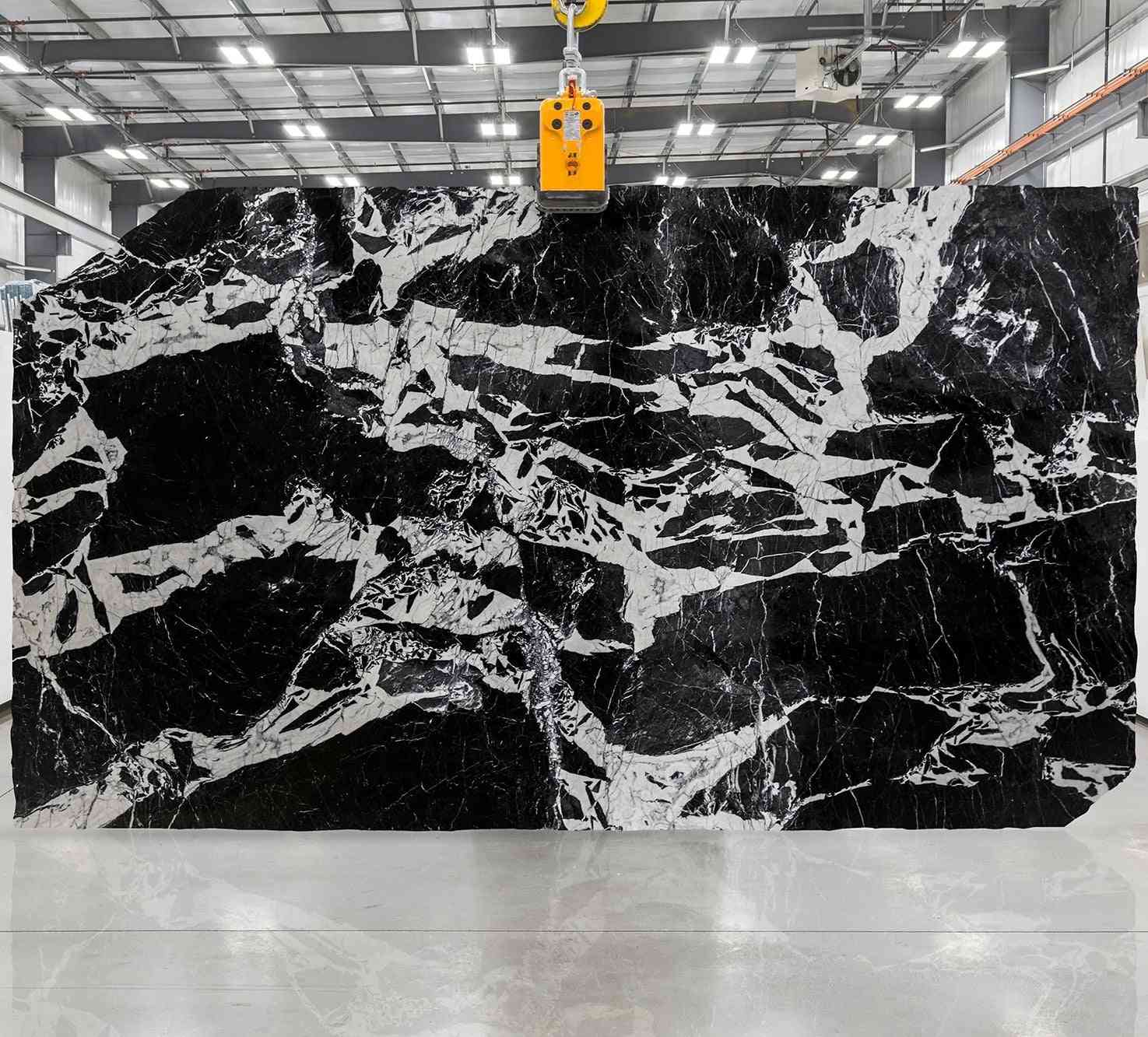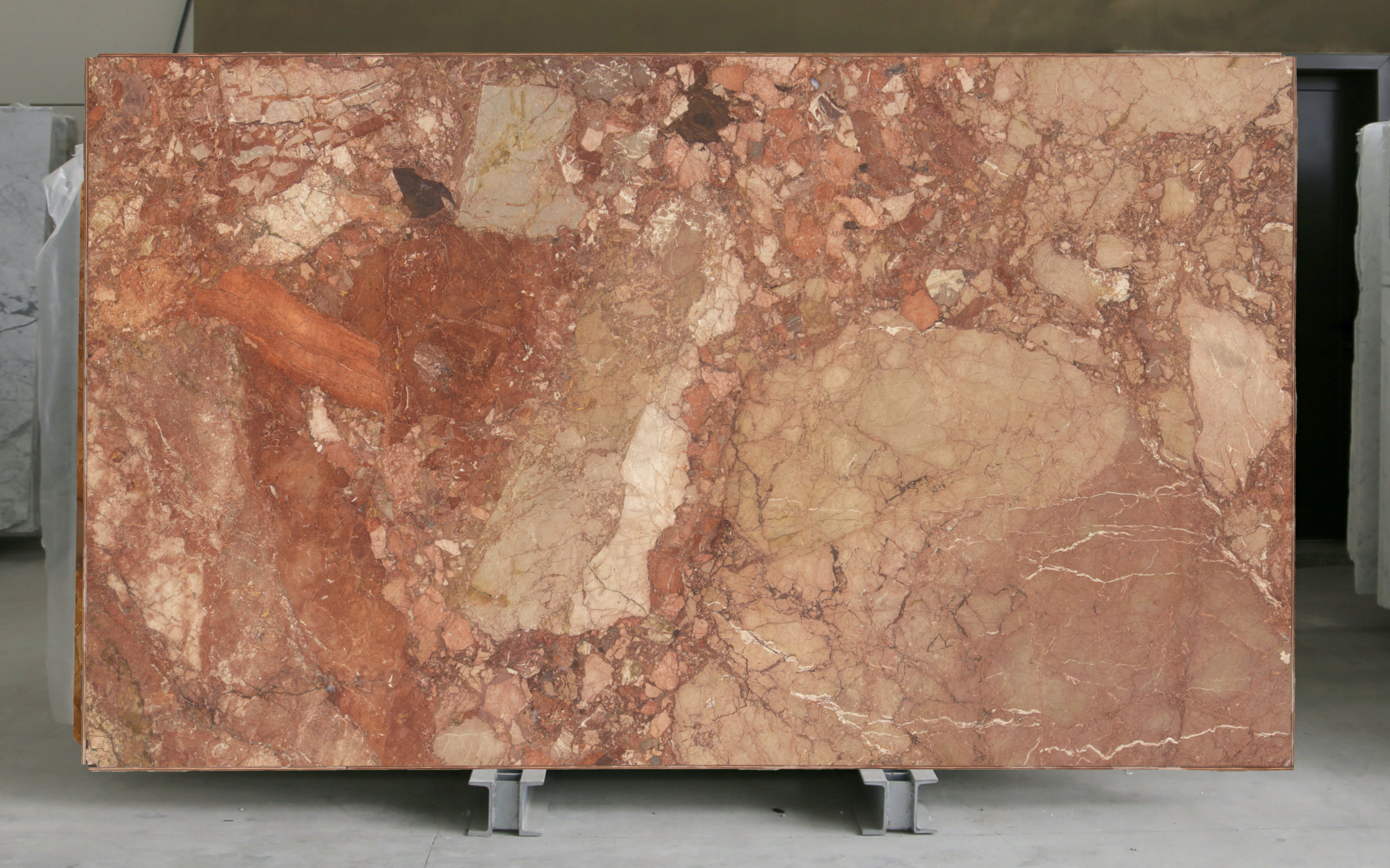The Connoisseur's Guide To Natural Marble
A carefully written piece by an experienced professional, sharing clear insights on a classic natural material. Packed with history and practical details, it deepens understanding of lasting beauty and skill.
Author:George EvansMar 24, 20257K Shares164.1K Views
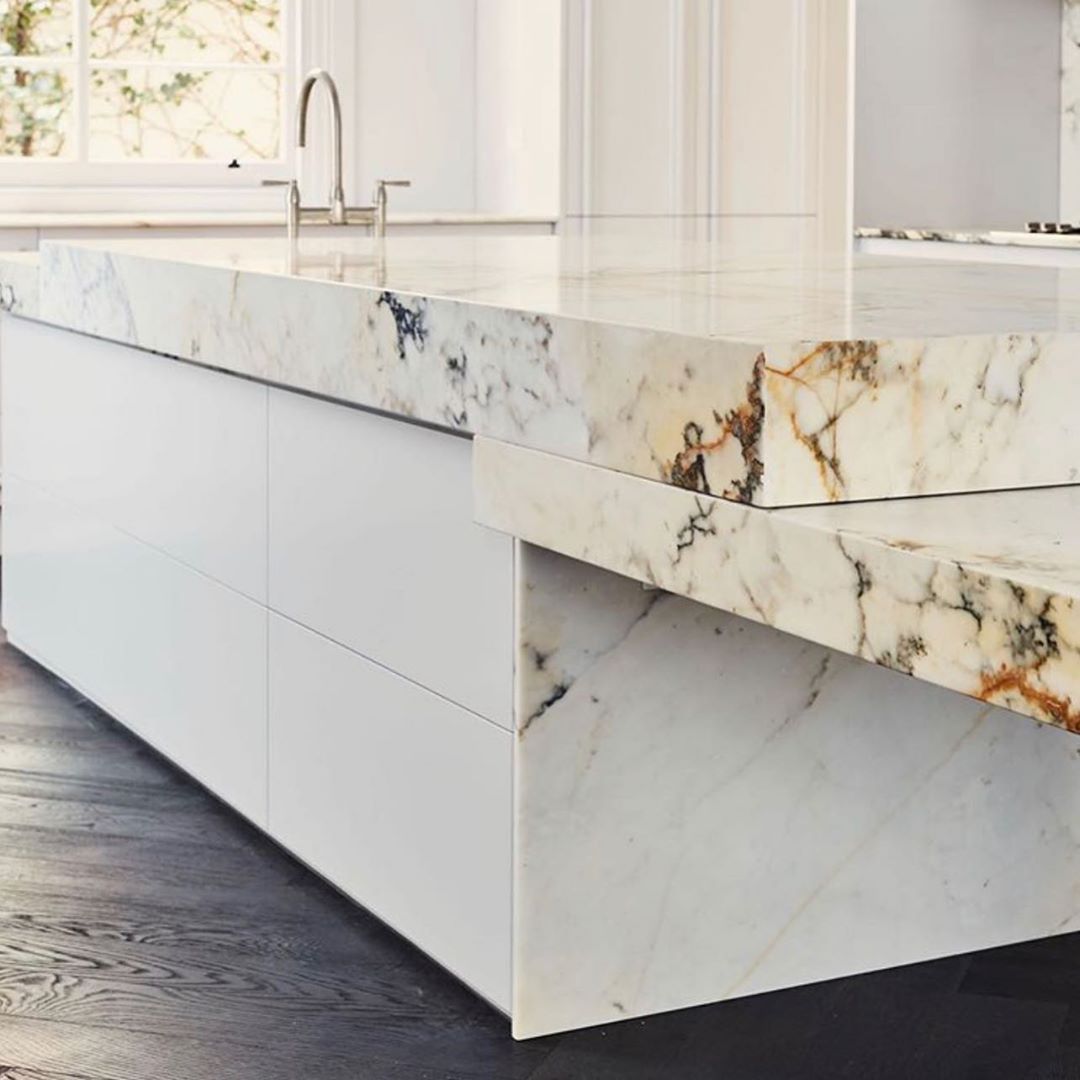
After 40 years in the marble trade, I've witnessed the quiet revolution of countless quarries and the steady evolution of extraction techniques. What remains unchanged is marble's timeless appeal - a natural stone that has adorned the world's most impressive structures for millennia.
This guide catalogs the world's most significant marble varieties, organized by rarity and distinctive characteristics. Each entry includes current market pricing (per square meter in USD for slabs), geological properties, historical significance, and notable applications.
Ultra-Rare Marbles
Calacatta Borghini
- Price:$3,800-5,200/m²
- Source:Limited quarry near Carrara, Italy
- Age:Jurassic (145-200 million years)
- Characteristics:Brilliant white background with dramatic gold-brown veining
- Durability:Moderate (6-7 on Mohs scale)
- Historical Significance:Reserved historically for Vatican commissions
- Special Features:Contains rare quartz and pyrite inclusions that catch light
- Notable Uses:Vatican Museum floors, limited luxury residences
Portoro (Black And Gold)
- Price:$2,800-4,500/m²
- Source:Portovenere, Italy (original quarries now depleted)
- Age:Jurassic (175 million years)
- Characteristics:Deep black with explosive gold veining
- Durability:Medium-high (7 on Mohs scale)
- Historical Significance:Favored by Napoleon, used extensively in Empire-style décor
- Special Features:Gold veining contains actual trace gold minerals
- Notable Uses:Palace of Versailles accents, luxury yacht interiors
Paonazzo Marble
- Price:$2,500-3,800/m²
- Source:Single quarry near Mount Altissimo, Italy
- Age:Cretaceous (100-145 million years)
- Characteristics:Creamy white with deep purple-red veining
- Durability:Medium (6 on Mohs scale)
- Historical Significance:Michelangelo's preferred marble for sculpture
- Special Features:Unique crystalline structure creates translucency effect
- Notable Uses:Opera house interiors, museum centerpieces
Milas Lilac
- Price:$2,200-3,000/m²
- Source:Milas region, Turkey (nearly depleted)
- Age:Cretaceous (66-145 million years)
- Characteristics:Soft lilac to lavender base with white calcite intrusions
- Durability:Medium-low (5-6 on Mohs scale)
- Historical Significance:Used in Byzantine imperial chambers
- Special Features:Natural antibacterial properties due to unique mineral composition
- Notable Uses:Luxury spa surfaces, high-end bathroom vanities
Irish Green Marble (Connemara)
- Price:$2,100-2,800/m²
- Source:Connemara, Ireland (limited production)
- Age:Precambrian (over 600 million years)
- Characteristics:Deep green with serpentine patterns
- Durability:High (7-8 on Mohs scale)
- Historical Significance:Used in Celtic religious sites, later Victorian architecture
- Special Features:Contains serpentinite, giving it higher hardness than typical marbles
- Notable Uses:Westminster Cathedral columns, luxury Celtic-themed establishments
Premium Marbles
Statuario Marble
- Price:$1,800-2,400/m²
- Source:Carrara, Italy
- Age:Jurassic (175-200 million years)
- Characteristics:Pristine white with minimal, elegant gray veining
- Durability:Medium (6-7 on Mohs scale)
- Historical Significance:Primary medium for Renaissance sculptors
- Special Features:Exceptional translucency and carving properties
- Notable Uses:Michelangelo's "David," premium countertops in high-end homes
Emperador Dark
- Price:$1,200-1,800/m²
- Source:Yecla region, Spain
- Age:Cretaceous (100 million years)
- Characteristics:Deep chocolate brown with irregular cream veining
- Durability:High (7-8 on Mohs scale)
- Historical Significance:Used extensively in Moorish palaces in Spain
- Special Features:Exceptional polish retention, develops patina with age
- Notable Uses:Luxury hotel lobbies, high-end furniture inlays
Nero Marquina
- Price:$1,000-1,600/m²
- Source:Markina, Basque Country, Spain
- Age:Cretaceous (100-120 million years)
- Characteristics:Deep black with crisp white veining
- Durability:Medium-high (7 on Mohs scale)
- Historical Significance:Featured in Spanish royal residences
- Special Features:Dramatic contrast makes it particularly photogenic
- Notable Uses:Fashion retail interiors, statement bathroom surfaces
Rosso Verona
- Price:$800-1,400/m²
- Source:Verona region, Italy
- Age:Jurassic (180 million years)
- Characteristics:Rich red-pink with ammonite fossil inclusions
- Durability:Medium (6 on Mohs scale)
- Historical Significance:Used in Roman amphitheaters, including Verona Arena
- Special Features:Contains visible ancient marine fossils
- Notable Uses:Opera house interiors, classical European architecture
Arabescato Corchia
- Price:$800-1,300/m²
- Source:Apuan Alps, Italy
- Age:Jurassic (160-180 million years)
- Characteristics:Bright white with dramatic gray-blue arabesque veining
- Durability:Medium (6 on Mohs scale)
- Historical Significance:Featured in Medici palaces
- Special Features:Veining often creates natural "artwork" patterns
- Notable Uses:Luxury bathroom cladding, feature walls in high-end hotels
Classic Marbles
Carrara Bianco
- Price:$400-800/m²
- Source:Carrara, Italy
- Age:Jurassic (190 million years)
- Characteristics:Soft white with subtle gray veining
- Durability:Medium (5-6 on Mohs scale)
- Historical Significance:Most widely used historical marble, foundation of Roman architecture
- Special Features:Consistent quality and availability make it an industry standard
- Notable Uses:Pantheon, Trajan's Column, countless European landmarks
Calacatta Gold
- Price:$600-1,200/m²
- Source:Carrara region, Italy
- Age:Jurassic (180-190 million years)
- Characteristics:Bright white background with bold gold veining
- Durability:Medium (6 on Mohs scale)
- Historical Significance:Favored in Renaissance papal architecture
- Special Features:Dramatic gold veining creates statement pieces
- Notable Uses:Luxury hospitality surfaces, high-end residential kitchens
Verde Alpi
- Price:$500-900/m²
- Source:Valle d'Aosta, Italy
- Age:Jurassic (150-170 million years)
- Characteristics:Deep green with white and black veining
- Durability:Medium-high (7 on Mohs scale)
- Historical Significance:Used in Italian Art Deco architecture
- Special Features:Contains chlorite, giving its distinctive green color
- Notable Uses:Luxury bank interiors, upscale restaurant surfaces
Crema Marfil
- Price:$300-600/m²
- Source:Alicante region, Spain
- Age:Cretaceous (100 million years)
- Characteristics:Warm beige to cream with subtle veining
- Durability:Medium-high (7 on Mohs scale)
- Historical Significance:Used throughout Mediterranean architecture
- Special Features:Excellent heat resistance, ideal for fireplace surrounds
- Notable Uses:Spanish cathedrals, Mediterranean luxury villas
Volakas
- Price:$250-500/m²
- Source:Drama region, Greece
- Age:Cretaceous (100-120 million years)
- Characteristics:Bright white with elegant gray veining
- Durability:Medium (6 on Mohs scale)
- Historical Significance:Used in ancient Greek temples
- Special Features:Exceptionally consistent patterning across large installations
- Notable Uses:Museum flooring, commercial spaces seeking elegant uniformity
Regional Specialties
Tennessee Pink Marble
- Price:$400-700/m²
- Source:Knoxville, Tennessee, USA
- Age:Ordovician (450 million years)
- Characteristics:Distinctive pink with white calcite mottling
- Durability:High (7-8 on Mohs scale)
- Historical Significance:Featured in many US government buildings
- Special Features:Technically a crystalline limestone, exceptional durability
- Notable Uses:National Gallery of Art, New York Grand Central Station
Makrana White
- Price:$300-600/m²
- Source:Rajasthan, India
- Age:Proterozoic (500-600 million years)
- Characteristics:Pristine white with minimal veining
- Durability:Medium (6 on Mohs scale)
- Historical Significance:Used in the Taj Mahal
- Special Features:Exceptional purity of calcite composition
- Notable Uses:World's most famous mausoleum, contemporary luxury hotels across India
Swedish Green Marble (Kolmården)
- Price:$600-900/m²
- Source:Kolmården, Sweden
- Age:Precambrian (1 billion years)
- Characteristics:Dark green with distinctive swirling patterns
- Durability:High (7-8 on Mohs scale)
- Historical Significance:Used in Stockholm Palace
- Special Features:Contains magnetite, sometimes mildly magnetic
- Notable Uses:Scandinavian government buildings, contemporary Nordic design
Skyros Purple
- Price:$800-1,200/m²
- Source:Skyros Island, Greece
- Age:Jurassic (150 million years)
- Characteristics:Lavender to deep purple with white veining
- Durability:Medium (6 on Mohs scale)
- Historical Significance:Used in Byzantine churches
- Special Features:Color derived from rare manganese mineral inclusions
- Notable Uses:Orthodox church altars, luxury Mediterranean villas
Rosa Portugues
- Price:$350-650/m²
- Source:Estremoz region, Portugal
- Age:Cambrian (500 million years)
- Characteristics:Pink to salmon background with scattered crystalline formations
- Durability:Medium-high (7 on Mohs scale)
- Historical Significance:Used in Portuguese colonial architecture globally
- Special Features:Colors intensify with age and exposure
- Notable Uses:Jerónimos Monastery in Lisbon, Brazilian colonial churches
Read Also: The Evolution Of Luxury Architecture
Historic Marbles (Limited Availability)
Phrygian Purple (Pavonazzetto)
- Price:$3,000-4,500/m² (when available)
- Source:Ancient quarries near Afyon, Turkey (largely depleted)
- Age:Triassic (220 million years)
- Characteristics:White background with distinctive purple veining
- Durability:Medium (6 on Mohs scale)
- Historical Significance:Prized by Roman emperors
- Special Features:Contains fossilized marine creatures visible in cross-section
- Notable Uses:Roman Forum, Pantheon interior columns
Cipollino Verde
- Price:$2,300-3,200/m² (when available)
- Source:Euboea, Greece (ancient quarries, limited modern extraction)
- Age:Carboniferous (350 million years)
- Characteristics:Sea green with white undulating bands resembling onion layers
- Durability:Medium (6 on Mohs scale)
- Historical Significance:Documented in Pliny's Natural History
- Special Features:Layered appearance caused by extreme geological pressure
- Notable Uses:Roman Emperor Hadrian's Villa, Bath's Roman spas in England
Giallo Antico
- Price:$2,800-3,800/m² (rare reclaimed pieces)
- Source:Simitthu, Tunisia (ancient quarries)
- Age:Cretaceous (100 million years)
- Characteristics:Golden yellow with occasional red/orange flecks
- Durability:Medium-high (7 on Mohs scale)
- Historical Significance:Favored by Emperor Augustus
- Special Features:Unusual coloration due to iron oxide deposits
- Notable Uses:Vatican Museum floors, Roman villa decorative elements
Grand Antique
- Price:$3,500-5,000/m² (if available)
- Source:Aubert quarry, French Pyrenees (exhausted)
- Age:Devonian (370 million years)
- Characteristics:Dramatic black with stark white angular veining
- Durability:High (7-8 on Mohs scale)
- Historical Significance:Used by Napoleon for imperial decoration
- Special Features:Almost graphic pattern, highly distinctive
- Notable Uses:Louvre Museum columns, Victoria & Albert Museum decorative elements
Breccia Pernice
- Price:$2,200-3,000/m² (limited availability)
- Source:Northern Italy (specific quarries now closed)
- Age:Jurassic (180 million years)
- Characteristics:Fragmented appearance with multicolored pieces in red-brown matrix
- Durability:Medium (6 on Mohs scale)
- Historical Significance:Featured in Baroque Italian palaces
- Special Features:True geological breccia formed by ancient landslides
- Notable Uses:Venetian palazzos, Vatican collection pieces
Technical Considerations
Geological Formation
True marble is metamorphic limestone, transformed under intense heat and pressure. This recrystallizes the calcium carbonate, creating the distinctive crystalline structure that gives marble its luminosity and translucence. The process takes millions of years and requires specific geological conditions.
Composition & Durability
- Calcite Content:Higher calcite content (90%+) produces whiter marbles but reduces acid resistance
- Dolomite Content:Increases durability but often creates grayer coloration
- Impurities:Iron oxide creates reds and yellows; chlorite creates greens; graphite creates blacks
- Mohs Hardness:Most marbles range from 3-7, significantly softer than granite (6-8)
- Acid Sensitivity:All marbles are vulnerable to etching from acidic substances
Selection Considerations
- Thickness:2cm standard for vertical applications; 3cm recommended for countertops
- Finish Options:Polished (reflective), honed (matte), leathered (textured), brushed (soft texture)
- Seam Visibility:Light-colored marbles generally show seams less than darker varieties
- Maintenance:All marble requires sealing; darker marbles show etching more prominently
- Book-Matching:Sequential slabs can be matched to create mirror-image patterns
Buying Considerations
Slab Selection
Always select specific slabs in person. Photos cannot convey the three-dimensional quality of marble's crystalline structure. What appears as a flaw in a photograph may be a captivating feature in person.
Grading Standards
No universal grading system exists for marble. Instead, each supplier typically uses A-D ratings based on:
- A Grade:Minimal veining, consistent background, few to no fissures
- B Grade:Moderate veining, generally consistent background, limited fissures
- C Grade:Heavy veining, some color variations, may have visible fissures
- D Grade:Dramatic veining, significant color variations, potential structural concerns
Market Trends
Marble pricing fluctuates based on:
- Extraction difficulty
- Quarry accessibility
- Block size availability
- Current design trends
- Transportation costs
- Petroleum prices (affecting extraction and shipping)
Conservation & Restoration
Historical Preservation
Marble restoration requires specialized knowledge of:
- Original quarry sources
- Period-appropriate finishing techniques
- Compatible consolidation materials
- Patina preservation
- Historical context
Modern Techniques
Contemporary conservation relies on:
- Laser cleaning for delicate surfaces
- Nano-lime consolidation for friable areas
- Compatible mortar matching for repairs
- Minimal intervention philosophy
- Reversible treatments where possible
Conclusion
After four decades working with marble from quarries worldwide, I can affirm that each slab tells a unique geological story spanning millions of years. The character, imperfections, and natural variations are what give marble its soul. While modern engineered materials may offer consistency and convenience, they cannot replicate the depth, history, and living quality of natural stone.
When you choose marble, you're not merely selecting a building material - you're becoming part of a tradition extending from ancient civilizations to the present day, connecting your space to the very bedrock of our planet's history.
You Might Also Like: Parametric Design In Architecture

George Evans
Author
George Anderson, an exceptional architectural designer, envisions and brings to life structures that transcend the realm of imagination. With an unwavering passion for design and an innate eye for detail, George seamlessly blends form and function, creating immersive spaces that inspire awe.
Driven by a deep appreciation for the interplay of space, light, and materials, George's innovative approach redefines the possibilities of architectural design. His visionary compositions leave an indelible mark, evoking a sense of wonder and transforming the built environment.
George Anderson's transformative designs and unwavering dedication continue to shape the architectural landscape, pushing the boundaries of what is possible and inspiring generations to come.
Latest Articles
Popular Articles
